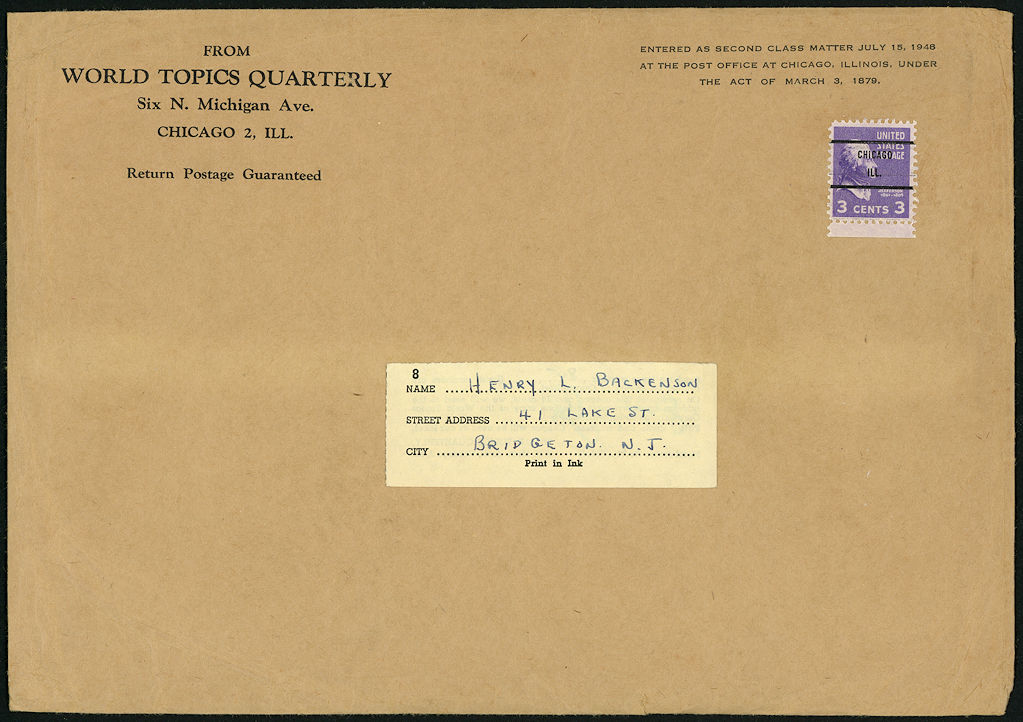
The Three-cent Prexie
Multiple lower rates
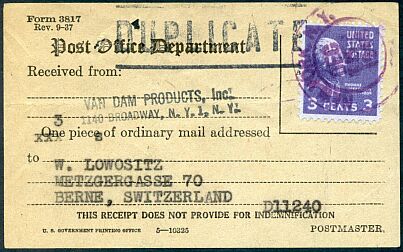
A very unusual use of a certificate of mailing form in 1946 to show that three items were mailed, and marked as a duplicate as well. From July 1, 1929 until July 1, 1957 the cost of a duplicate certificate of mailing was one cent.
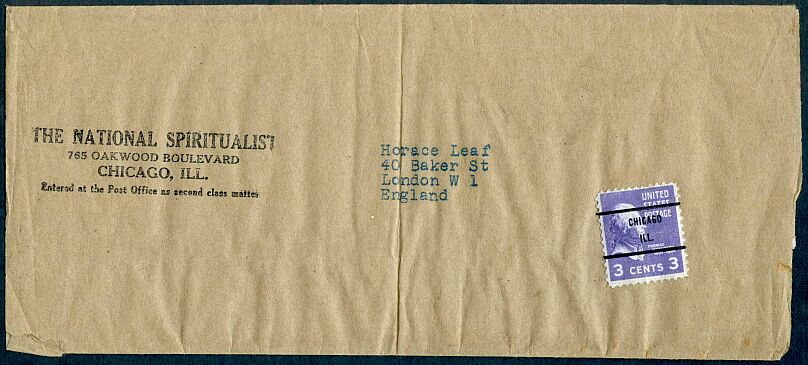
Foreign mailing of printed matter using a three-cent Prexie. There was no general printed matter rate of three cents, so the postage would likely be for a periodical between 2 and 4 ounces at one-and-a-half cents per two ounces. This rate was current from April 1, 1932 until November 1, 1953.
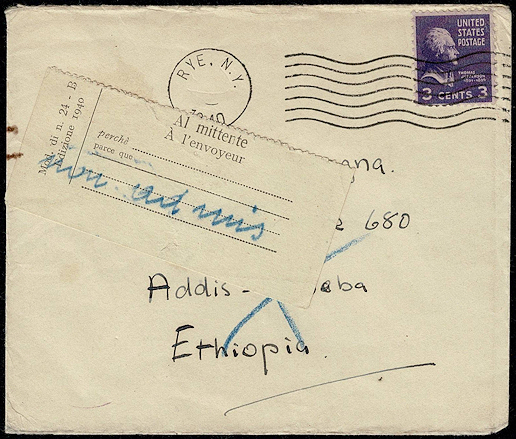
Christmas cards could be sent abroad at the printed matter rate if they did not contain more than five words of conventional greeting handwritten in them. This card, sent to Ethiopia in 1940, must have weighed slightly over two ounces, so it was sent for three cents. It was returned to sender as non-admissable for some reason.
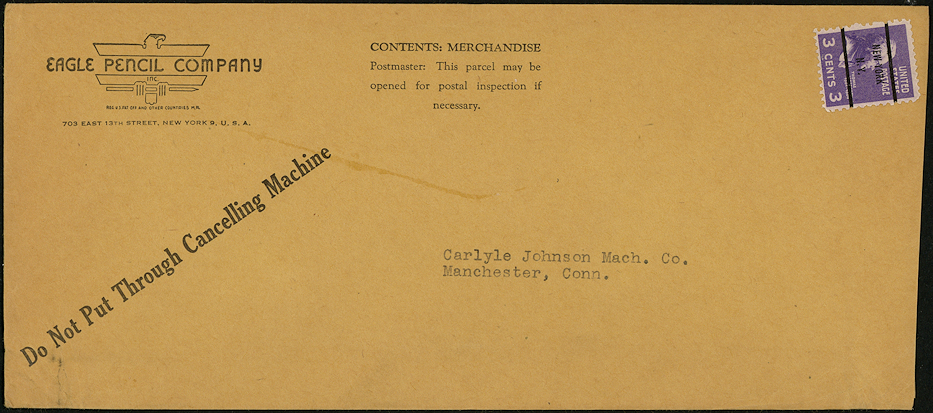
Second step third class mailing of pencils. If mailed before 1946 it would be twice the one-and-one-half cent rate for two ounces, and if mailed after that, two cents for the first two ounces and one cent for the next ounce.
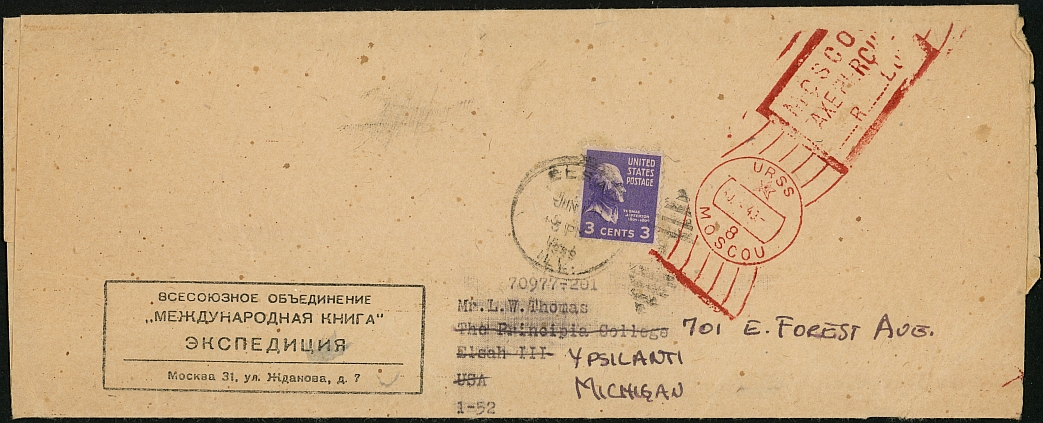
A three-cent Prexie was used to forward printed matter from Russia in 1949. Third class postage was two cents for the first two ounces and one cent for each additional ounce, so the item in this wrapper must have weighed between two and three ounces.
Should there have been a charge for forwarding an international third-class item from a UPU country? My understanding is that such forwarding was free between countries, but within a country, that country's postal rules govern. If this is a correct interpretation, within the U.S third class mail requires payment of appropriate postage when forwarded, so the charge is right. If anyone knows that this line of reasoning is incorrect, please let me know.
It is possible that this mailing was considered transient second class mail once inside the United States. If so, the charge would indicate a weight of four to six ounces.
